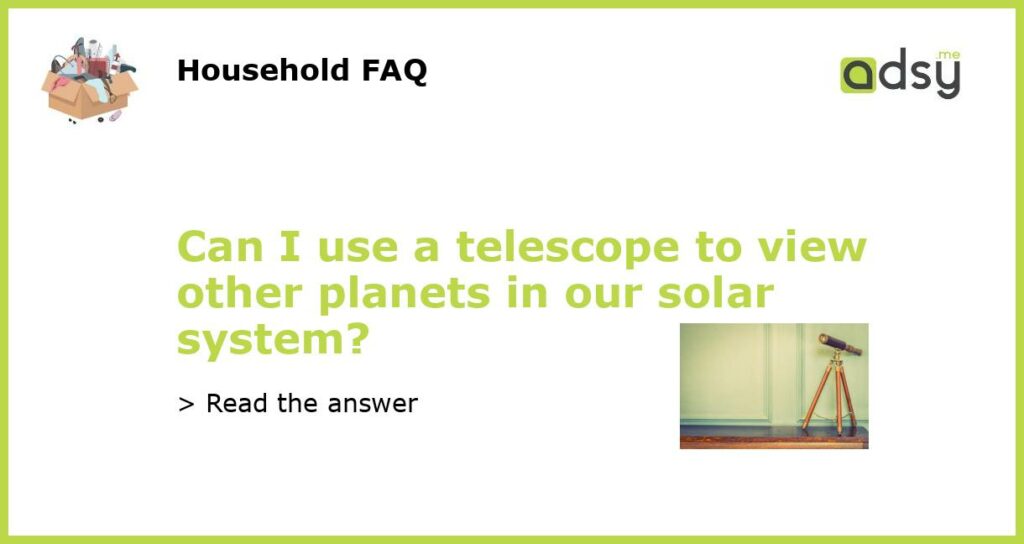Yes, you can use a telescope to view other planets in our solar system
If you have ever wondered about the possibility of observing other planets in our solar system, the answer is a resounding yes. With the help of a telescope, you can get a close-up look at neighboring planets such as Mars, Jupiter, Saturn, and even the elusive Uranus and Neptune. Of course, the level of detail you can observe will depend on the quality of your telescope and environmental conditions, but with the right equipment and a little patience, you can enjoy the wonders of the solar system from the comfort of your own backyard.
Understanding the limitations of telescopes
While telescopes open up a world of possibilities for stargazers, it is essential to understand their limitations. The size and cost of telescopes play a significant role in determining the level of detail you can observe. Entry-level telescopes are great for beginners and casual stargazers but may not offer the level of magnification required for observing planetary details. On the other hand, high-end telescopes with advanced features and larger apertures can provide breathtaking views, but they often come with a hefty price tag. It’s important to find the right balance based on your interests and budget.
Choosing the right telescope for planetary observation
If your primary goal is to observe planets in our solar system, certain telescope features are more critical than others. The two main types of telescopes to consider are refractors and reflectors. Refractors use lenses to gather and focus light, while reflectors use mirrors. Reflectors generally offer more bang for your buck when it comes to planetary observation, as they tend to have larger apertures, which allows for greater light-gathering capability and higher magnification.
In terms of specific features, look for a telescope with a high focal length. Focal length is the distance between the objective lens or mirror and the point where the image is formed. A long focal length will result in higher magnification, allowing you to see more detail on planets. Additionally, investing in high-quality eyepieces can enhance your viewing experience. Eyepieces with shorter focal lengths produce higher magnification.
Tips for observing planets with a telescope
Now that you have your telescope, it’s time to embark on your planetary observation journey. Here are a few tips to make the most of your stargazing experience:
- Choose the right time: Planetary visibility varies depending on the time of year and the planet’s position in its orbit. Websites such as Naked Eye Planets offer helpful information on when to observe specific planets.
- Find a dark location: Light pollution can hinder your viewing experience, so try to position yourself away from bright city lights. A dark, clear sky will provide better contrast and visibility.
- Allow time for acclimation: When transitioning from a brightly lit area to a dark observing spot, give your eyes at least 20 minutes to adapt to the darkness. This will help you see more details in the night sky.
- Experiment with different magnifications: Planets have different features and sizes, so try out different eyepieces to find the magnification that works best for each planet. Start with lower magnification to get a broader view and gradually increase to observe finer details.
- Patience is key: Planetary observation requires patience and practice. Atmospheric conditions, including turbulence and seeing quality, can impact the clarity of the view. Keep trying on different nights to find the best conditions for observing planetary details.
Using a telescope to observe other planets in our solar system is an exciting hobby for astronomy enthusiasts. With the right telescope and proper techniques, you can explore the wonders of our cosmic neighborhood. Remember to choose a telescope suitable for planetary observation, consider viewing conditions, and be patient. The more you observe, the more you will discover about the planets and their incredible features.






